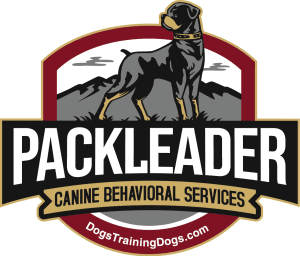Training a dog goes beyond teaching commands and rewarding good behavior—it involves building trust, communication, and understanding. One of the most critical aspects of this process is reading canine body language. Dogs communicate primarily through body language; their posture, facial expressions, and movement reveal how they feel and what they intend. For dog owners and trainers in Rhode Island and across New England, recognizing these signals is essential for effective training and maintaining a healthy, respectful relationship.
The Importance of Canine Body Language in Training
1. Enhancing Communication
Understanding canine body language bridges the communication gap between humans and dogs. While dogs can learn to respond to verbal commands, their natural communication is non-verbal. Recognizing signs of stress, anxiety, excitement, or aggression allows trainers to adjust their approach. For instance, if a dog displays fear or discomfort, the trainer can modify the environment or provide reassurance to help the dog feel secure.
2. Building Trust and Strengthening Bonds
When trainers are attuned to a dog’s body language, they can prevent situations that cause stress or fear. This sensitivity builds trust, as the dog learns that its handler respects its emotional state. A dog that feels understood is more likely to cooperate and engage positively during training.
3. Preventing Behavioral Issues
Many behavioral problems stem from miscommunication. By identifying subtle cues—such as lip licking, yawning, or turning away—owners can intervene early before anxiety escalates into barking, lunging, or biting. Early recognition helps reinforce calm behavior and prevent negative patterns.
4. Ensuring Safety
Recognizing body language is also crucial for safety. Dogs often display early signs of discomfort before reacting aggressively. Indicators such as stiff posture, a hard stare, or raised hackles can signal a need to de-escalate. Reading these signs helps prevent incidents and keeps both humans and dogs safe.
Key Elements of Canine Body Language
Facial Expressions:
- Ears: Forward ears indicate alertness; pinned-back ears often suggest fear or submission.
- Eyes: Soft, blinking eyes reflect calmness, while wide “whale eyes” reveal fear or anxiety. A direct, unwavering stare can be a sign of a challenge.
- Mouth: A relaxed mouth slightly open indicates comfort. Lip licking, yawning, or teeth showing can signal stress or discomfort.
Body Posture:
- Tail: Tail position and motion reveal mood. A high, stiff wag often shows excitement or aggression, while a low, slow wag indicates insecurity.
- Overall Posture: A loose, wiggly body shows relaxation. A stiff, forward stance can indicate dominance or alertness, while cowering shows fear or submission.
Movement:
- Pacing: Can signal restlessness or anxiety depending on the situation.
- Freezing: A dog that suddenly stops moving may be fearful or uncomfortable, possibly preparing to flee or react defensively.
Vocalizations:
- Barking, Growling, Whining: Although not strictly body language, sounds such as barking, whining, or growling add context. High-pitched barking often indicates excitement or anxiety; low growls serve as a warning. Understanding the tone and context helps interpret emotion accurately.
Practical Applications in Training
Positive Reinforcement: Trainers who recognize relaxed, confident body language can reward it, reinforcing calm, focused behavior. For example, rewarding a calm sit with soft eyes and relaxed posture helps the dog associate calmness with success.
Timing and Patience: Understanding when a dog is engaged or stressed helps trainers time sessions effectively. Pushing a tired or anxious dog is counterproductive; recognizing the need for a break leads to more productive, enjoyable sessions.
Customized Training Approaches: Every dog is different. Observing body language helps tailor the training method to match temperament and comfort level. A dog that exhibits anxiety in new environments might need gradual desensitization and confidence-building exercises.
Building Confidence: For shy or fearful dogs, identifying small signs of curiosity such as approaching a new object provides opportunities to reward bravery. Over time, this builds confidence and reduces fear-based behaviors.
Addressing Aggression: Recognizing early aggression cues such as stiff posture, tense jaw, or a hard stare allows trainers to redirect energy before escalation. Using methods such as counter-conditioning or redirection can help correct underlying causes safely and effectively.
Conclusion
Understanding canine body language is fundamental to effective dog training. It enhances communication, builds trust, prevents behavioral problems, and ensures safety for both trainer and dog. By observing facial expressions, posture, movement, and vocal cues, trainers and owners can create a training environment based on respect and mutual understanding.
At K9 Behavioral Services, we believe successful training begins with listening to what your dog is telling you through their body, not just their bark. The more we understand our dogs, the stronger the bond we build and the happier their lives become.

